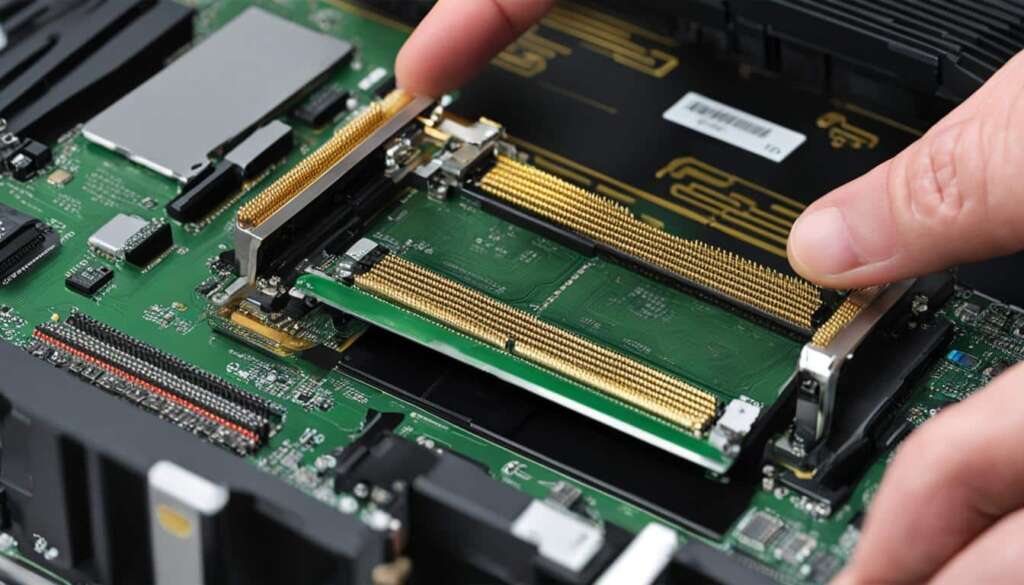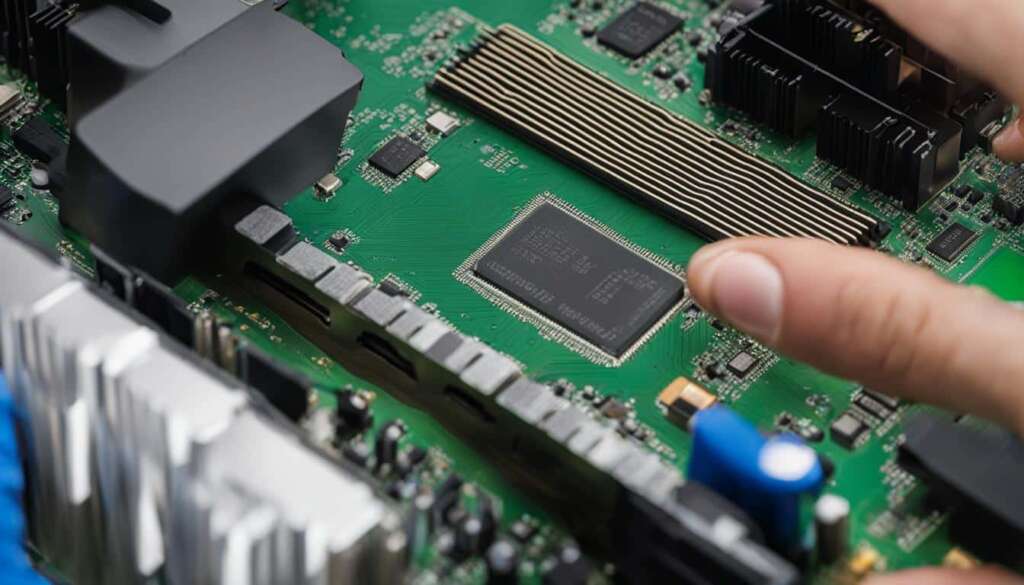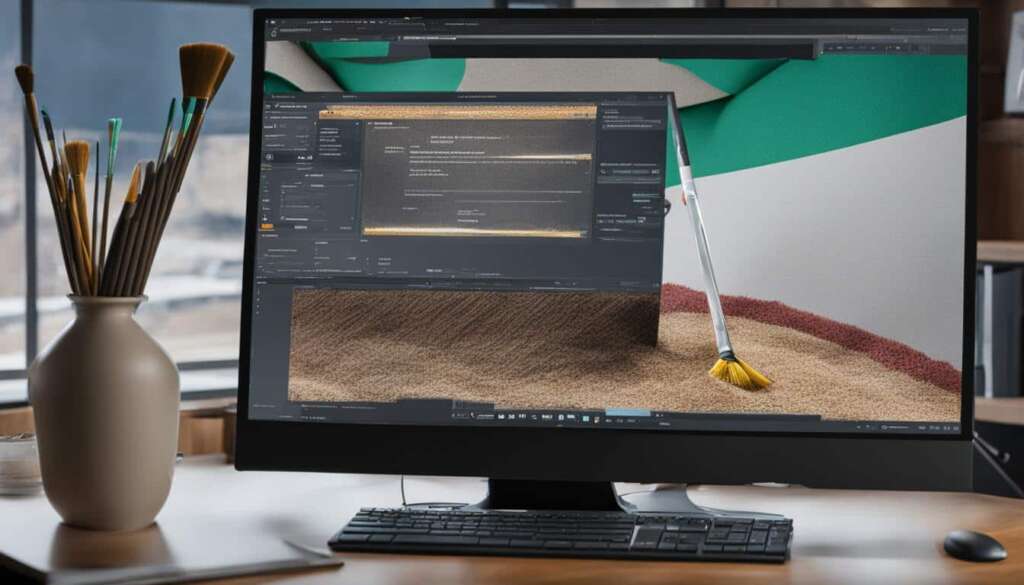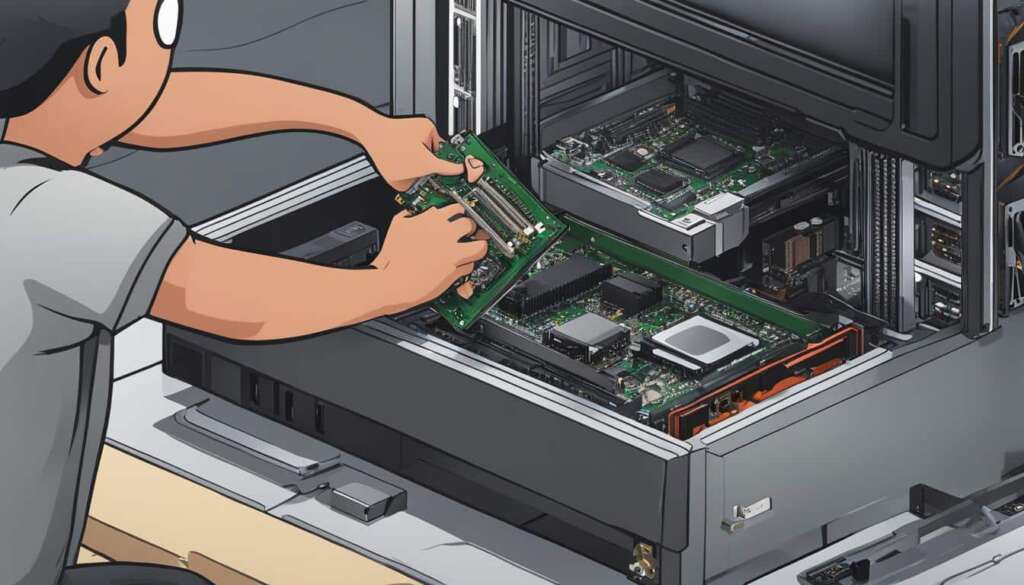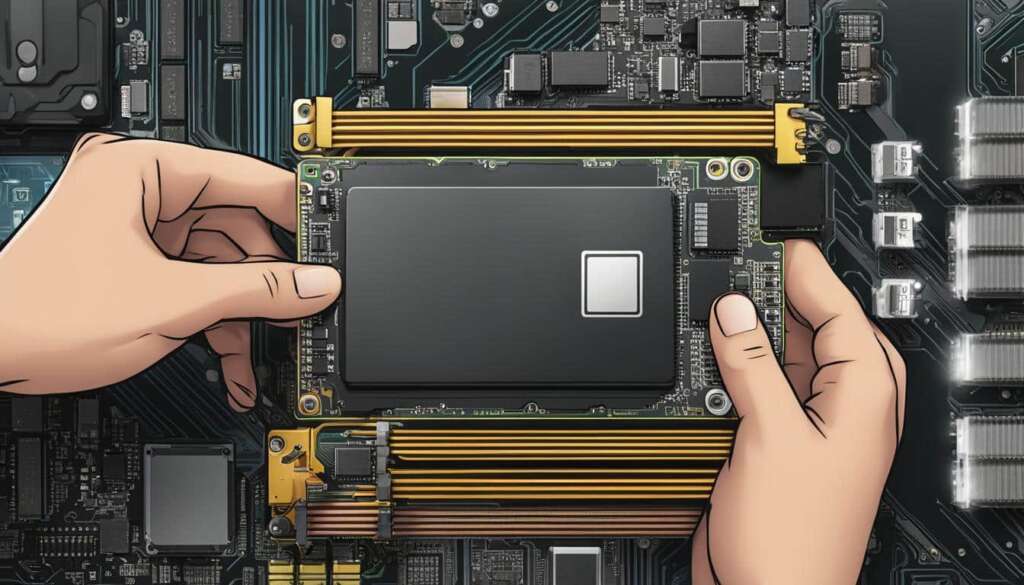Table of Contents
Do you want to upgrade your computer’s performance and increase system responsiveness for multitasking? Adding RAM to your desktop computer can be a game-changer. By following a simple step-by-step guide, you can easily install RAM in your PC and enjoy the benefits of increased memory.
Before we dive into the installation process, let’s gather the necessary supplies and prepare your computer. You’ll need Crucial® desktop memory, a screwdriver, and your computer’s owner’s manual. Creating a static-safe environment is crucial, so clear off any plastic bags or papers from your workspace. Make sure to shut down your desktop computer, unplug the power cable, and discharge residual electricity by holding the power button for 5 seconds. Refer to your owner’s manual to open the case and ground yourself by touching an unpainted metal surface.
Now that you’re ready, it’s time to install the new RAM. Align the notches on the RAM modules with the ridge in the slots and apply even pressure to firmly press them in. If your desktop requires matched pairs, follow the labeling on the slots. Once the installation is complete, close the computer case and plug in the power cable.
Now comes the exciting part. Power up your computer and experience a more responsive machine that can handle memory-intensive applications with ease. From video editing to running multiple software simultaneously or playing video games, the increased memory will boost your computer’s performance. Enjoy the seamless and quick memory expansion you have achieved by installing RAM in your PC.
Get ready to supercharge your desktop computer and take it to the next level!
Gather Supplies and Prepare Your Computer
Before you begin the installation process, it’s important to gather all the necessary supplies and prepare your computer for the RAM upgrade. Here’s a step-by-step guide to help you get started:
- Gather Supplies: To install RAM in your computer, you’ll need the following supplies:
- Crucial® desktop memory
- Screwdriver
- Computer’s owner’s manual
Install the New RAM
Now that you have gathered the necessary supplies and prepared your computer, it’s time to install the new RAM modules. This step is crucial in upgrading your computer’s memory and improving its performance.
Step 1: Align the Notches
To begin, carefully align the notches on the new RAM modules with the ridges in the memory slots on your motherboard. This ensures that the modules are inserted correctly and securely.
Step 2: Apply Firm Pressure
Place your fingers along the edges of the RAM modules and apply even pressure to firmly press them into the slots. It’s important to exert about 30 pounds of pressure to ensure that the modules are properly installed.
Pro Tip: Double-check that the modules are fully inserted and seated evenly in the slots. A slight click or snap sound confirms a secure installation.
Step 3: Close the Computer Case
Once the new RAM is successfully installed, close the computer case according to the instructions provided in your computer’s owner’s manual. Make sure all screws are securely tightened to ensure the safety of your components.
Step 4: Plug in the Power Cable
Lastly, plug in the power cable to restore power to your computer. This step is crucial for the new RAM to be recognized and utilized by the system.
Now that you have installed the new RAM, you are one step closer to unlocking the full potential of your computer’s performance. Proceed to the next section to power up your computer and enjoy the benefits of increased memory!
Power Up and Enjoy
With the new RAM installed, power up your computer. You will now experience a more responsive computer that is better equipped to handle memory-intensive applications. Whether you want to edit videos, run multiple software simultaneously, or play video games, the increased memory will enhance your computer’s performance.
Now, you can effortlessly power through your tasks without any lag or slowdown. Your computer’s improved responsiveness will allow you to work more efficiently, saving you valuable time and boosting your productivity. Say goodbye to frustrating delays and hello to smooth and seamless multitasking.
Furthermore, your gaming experience will reach new heights as the additional memory enables faster loading times, smoother graphics, and improved gameplay. Enjoy a truly immersive gaming session, whether you’re exploring vast open-world environments, engaging in intense online battles, or embarking on epic quests.
The installation of RAM in your PC has unlocked the full potential of your computer, making it a powerful tool for all your computing needs. Embrace the enhanced performance, unlock new possibilities, and power up your computer to enjoy a more efficient and productive experience with your memory-intensive applications.
FAQ
What are the benefits of adding RAM to my desktop computer?
Adding RAM to your desktop computer can significantly improve its performance by making it faster, more responsive, and better equipped for multitasking.
What supplies do I need to install RAM in my PC?
To install RAM in your PC, you will need Crucial® desktop memory, a screwdriver, and your computer’s owner’s manual.
How do I prepare my computer before installing new RAM?
Before installing new RAM, make sure you are working in a static-safe environment. Clear off any plastic bags or papers from your workspace. Shut down your desktop computer, unplug the power cable, and hold the power button for 5 seconds to discharge residual electricity. Open the case according to the instructions in the owner’s manual and ground yourself by touching an unpainted metal surface. Finally, remove the existing memory modules by pressing down on the clips on the sides of each module and pulling them out.
How do I install the new RAM?
To install the new RAM modules, align the notches on the modules with the ridge in the slots. Hold the modules along the edges and apply even pressure to firmly press them in. If your desktop requires you to install modules in matched pairs, follow the labeling on the slots. Once the new RAM is installed, close the computer case, plug in the power cable, and proceed to the next step.
What should I do after installing the new RAM?
After installing the new RAM, power up your computer. You will now experience a more responsive computer that is better equipped to handle memory-intensive applications.
How will adding RAM to my desktop improve its performance?
Adding RAM to your desktop computer increases its memory capacity, allowing it to run more programs simultaneously and improving overall performance. Whether you want to edit videos, run multiple software simultaneously, or play video games, the increased memory will enhance your computer’s performance.

